It's been a while, but I'm picking up where I left off in my series of posts on
tartan in women's fashion! If you're new to the party and interested in pre-1840s, you can check out my earlier two posts on the
Regency and
Walter Scott revival at the links.
The
Waverly novels by Sir Walter Scott romanticized life in the Scottish Highlands and created an image of brave clan members and determined heroines all bedecked in tartan. While tartans, or woven plaids, had been a part of Highland culture, Scott's novels and the tartan fashions that followed brought a relatively small, rural, old (medieval even) pattern to the heights of London fashion. As Scotland struggled politically and economically to maintain a national identity within the quickly industrializing mid-19th century British Empire, the romantic image of clan members in kilts and maidens in fields of heather enchanted English ladies. One particularly influential lady to be enchanted by the romantic promise of the Scottish countryside was Queen Victoria herself.
 |
| portrait of Victoria in tartan sash |
Queen Victoria and Prince Albert were so charmed by the Scottish highlands that they built a castle there, called
Balmoral, in 1853 (the estate was purchased in 1848). While decorating, Albert designed several different tartan setts, and Balmoral was tartan from floor to curtain.
 |
| Balmoral Castle, circa 1860s--you can see more images here |
 |
| illustration of Balmoral interior, 1857 |
 |
| watercolor of Queen Victoria's dressing room, 1857 |
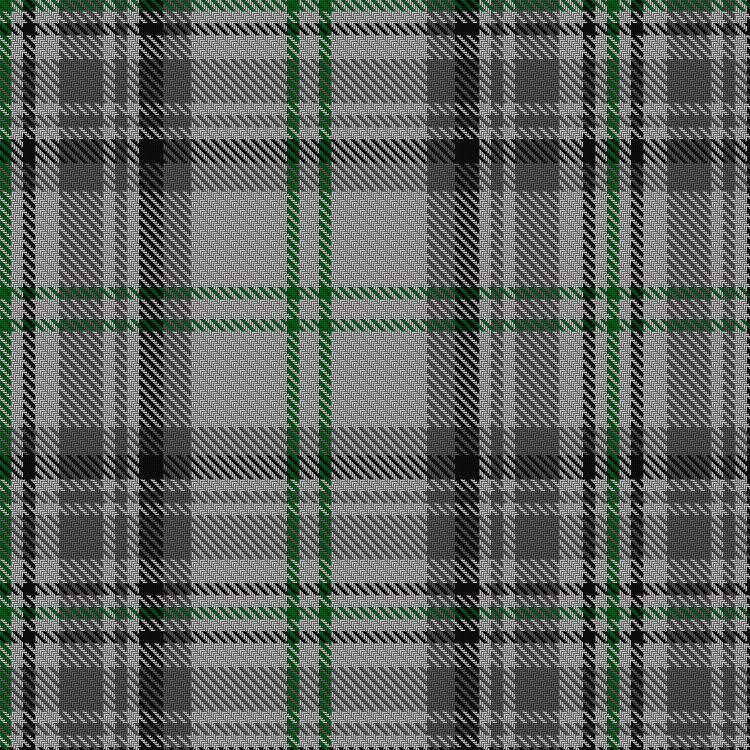 |
| Balmoral (Green), 1853 |
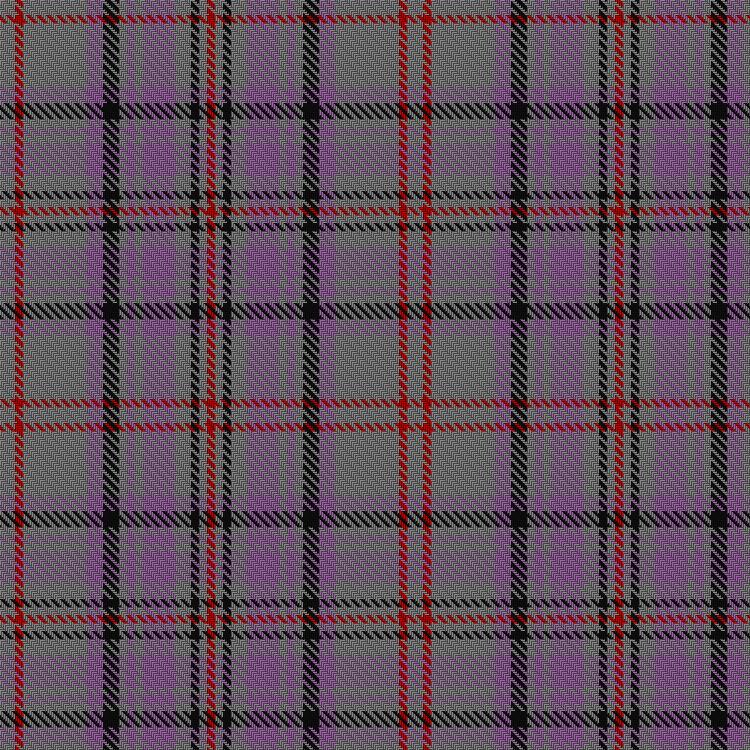 |
| Balmoral (Lavender), 1853 |
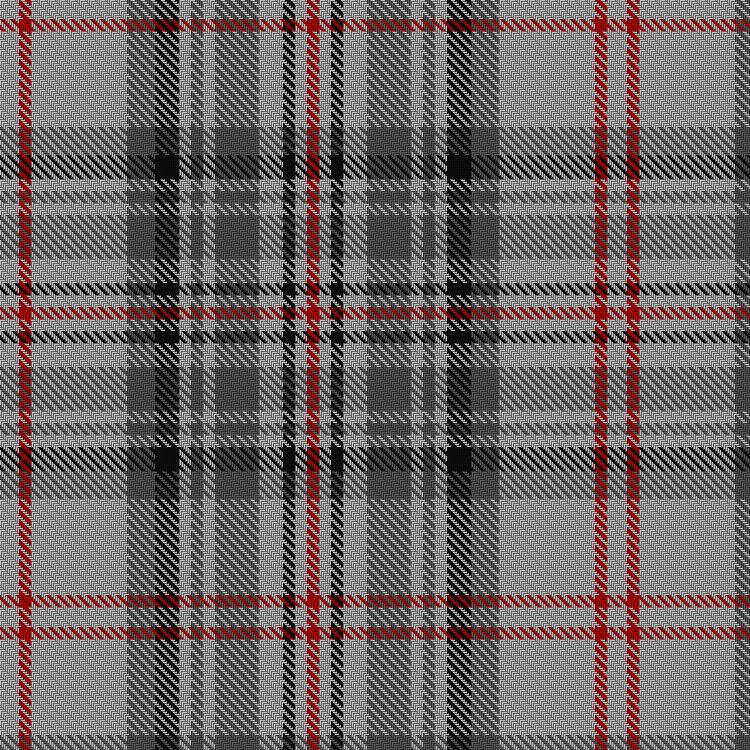 |
| Balmoral, 1853 |
Balmoral became a vacation playground for the monarchs and their friends, and the appropriation of many elements of Scottish tradition (such as the wearing of the kilt) were adopted by Balmoral residents during their stay. According to the
Scottish Registry of Tartans, Queen Victoria had a skirt in the Balmoral tartan, and a similar sett was woven for her children's clothes. Victoria was also quite fond of the "Dress Stuart (or Stewart)" tartan, and had her own version created with a red stripe added.
 |
| Victoria Stuart tartan, a variation of Dress Stuart |
This particular tartan was featured in both Victoria's clothes as well as her friends--the Princess of Wales wore it to a ball at Balmoral Castle in 1863 (which was the inspiration for
my '60s ballgown last year):
 |
| photo from a later auction catalogue showing a dress in dress stuart tartan with black lace trim (likely altered from its original version) |
Really, though, Queen Victoria started a trend for all kinds of tartan, not just her chosen few. Even before Balmoral, Victoria was already a fan.
 |
| dress belonging to Princess Victoria, 1835 |
The incorporation of tartan (or really, plaids in general) into women's fashion is evident in extant garments, photographs, and fashion plates from the period, which demonstrate a range of applications for the pattern. While Victoria was certainly a trendsetter, the use of tartan spread to America, too; its roots in Queen Victoria's Scottish infatuation (or the "Balmorality" cultural appropriation, as scholars have called it), is still referenced in the popularity of the Royal Stuart tartan.
 |
| Dress in royal stuart tartan with green fringe, c. late 1860s (whitaker auctions) |
 |
| Wool day dress in royal stuart tartan, 1860s |
 |
| plaid taffeta silk, 1860 |
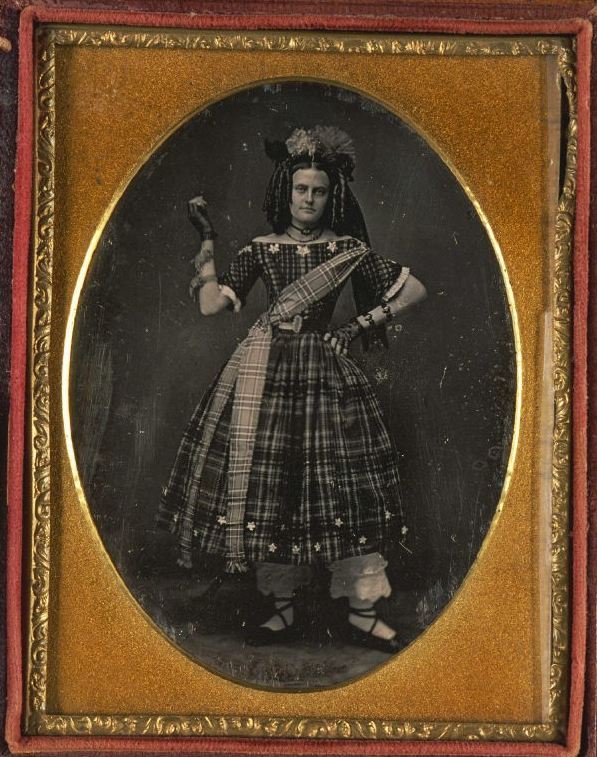 |
| lady in fancy dress (probably Scottish), 1840-60 |
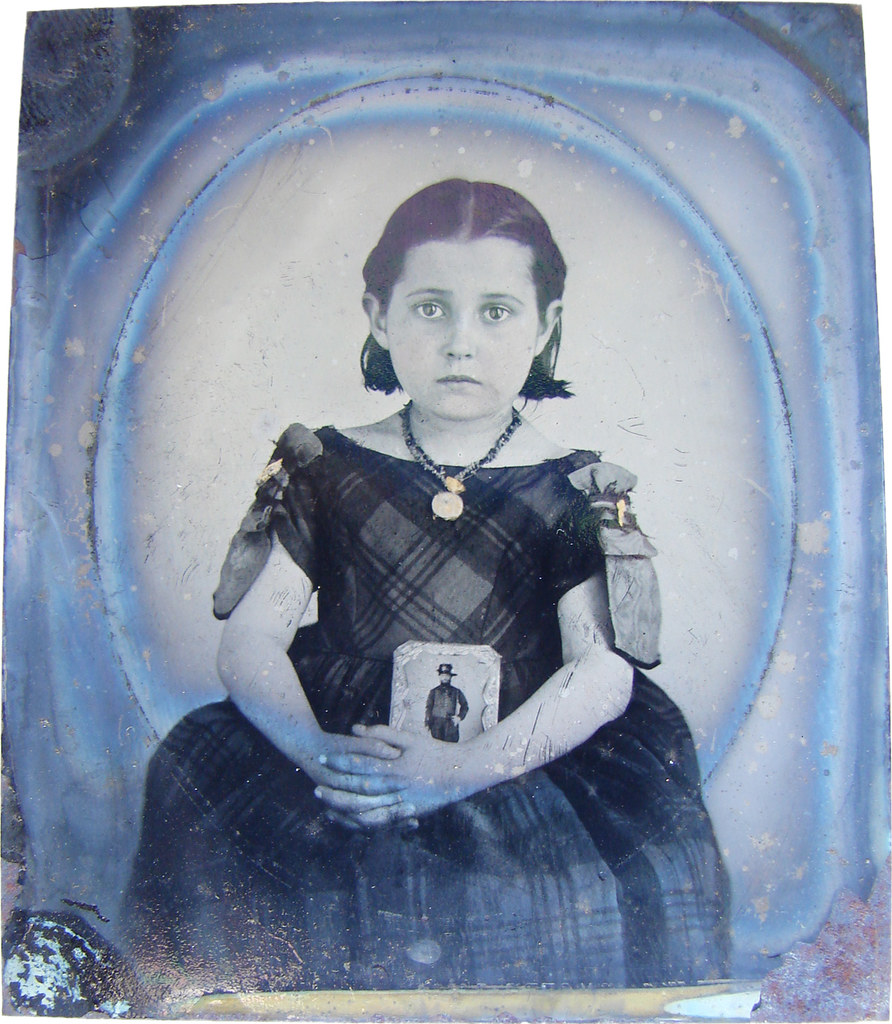 |
| girl in plaid mourning dress, holding picture of father dressed as a cavalry man, 1860s |
 |
| fashion plate depicting plaid sash, 1863 |
 |
| Carte de Visite, 1860s, from San Fransisco via pinterest |
 |
| 1861-65, via pinterest |
While tartan must be woven, and can therefore be a variety of fabrics, it is most commonly wool or silk. Silk being so fabulous for dresses, it is most likely that was what Victoria favored. However, we do know the woolen variety of tartan had another use at Balmoral: keeping ladies warm! A
fabulous anecdote from one of Queen Victoria's ladies' maids reveals that the Duchess of Manchester, at least, owned a pair of scarlet tartan drawers. How fabulously scandalous!
Plaid was not new in the mid-19th century, but Queen Victoria's status as a trendsetter, combined with her infatuation with the romanticized Scottish Highlands, were a dynamic pair, and it's no surprise that tartan (and plaid in general) was so popular during her reign. I bet those ladies on picnics at Balmoral were quite a sight!

















Thank you, I'm so glad you enjoyed it!
ReplyDeleteFound thus useful for research; but would a middle-class, English woman order a silk dress in tartan in the year 1850, do you think?
ReplyDeleteGlad you found this helpful!
ReplyDeleteI can't speak for English culture specifically, but in general evening and ball dresses were made of silk. As affording enough silk to make a dress wasn't easy for most people, a lot of women re-purposed old dresses (there are some great extant examples of this), re-trimmed and re-fitted dresses from previous years, etc. All this to say having a silk dress would be reasonable for a middle-class woman.
Buying tartan fabric, especially a specific tartan, would require it to be woven custom or purchased at a more expensive price. However, plaids of all colors and varieties were popular during the mid-19th century, not just tartans. It would be quite fashionable to have a plaid dress, and that fabric would be much easier (and cheaper!) to come by.
That all said, I think it would be pretty reasonable for a middle-class English woman to have a plaid or tartan dress in 1850. If not a new dress with new plaid fabric, then an older dress re-made to the new styles, or new fabric purchased from Scotland or London. Hope this helps!
Hello,
ReplyDeleteCould you tell me were they keep the black Princess Victoriadress?
Greetings from Belgium form S.
This comment has been removed by the author.
DeleteThe dress of Queen Victoria is part of the Royal Collection. Where does the 'dress in royal stuart silk taffeta with green fringe, c.late 1860s' come from?
ReplyDeleteHi! That dress I believe is in a private collection-it was sold by Whitaker Auctions in 2006, and I found the photo in an archive of the catalog. Here's a link: https://whitakerauction.smugmug.com/Fall2006/Fall-2006/i-8P9RP6t
DeleteInteresting article but your dating of the Balmoral tartan is a little out - https://www.scottishtartans.co.uk/Balmoral_Tartan.pdf
ReplyDeleteInteresting article, thanks for sharing! In order to be standard, I try to cite the dates associated with the sample images I pull from the Scottish Register of Tartans (the national registry). Thus all of these samples are listed with their date of 1853. But it's fascinating to know it's probably older than that!
DeleteHello,
ReplyDeleteI am working on an exhibition and wish to use the image you have of Queen Victoria with the tartan sash. Can you give me the original citation? my email is connie.frisbeehoude@nysed.gov
I have family portraits dated 1849 painted in London. I'll try to upload my 3xgreat grandfather George (37) and his son John (8) because they are both wearing "tartan". George has a black coat, high white collar, long cravat (black with a red striped check plus stick pin) and John has a superb checked jacket over white shirt with Eton collar and black bow.
ReplyDeleteHello, I am working on an exhibition of wedding dresses and I have a 1859 tartan dress in the exhibition and wanted to use an image line the one you have of Queen Victoria. because of copyright issues can you tell me where that particular image came from? Thank you. Still looking for a reply as I realize I have asked for this information previously.
ReplyDeleteHi Connie, I tried to email you after your first post but the email returned to sender. I believe I originally found the image in a book. My library is packed at the moment but I'll try to find the title when I can. In the meantime, this image is credited as a lithgraph here: https://www.scotsconnection.com/t-tartan3.aspx
DeleteI hope this helps!